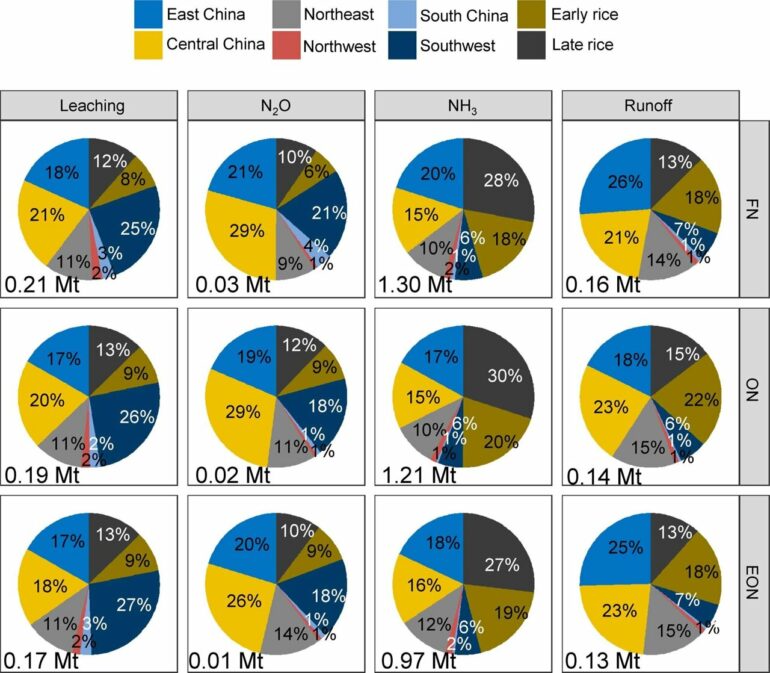Addressing the dual challenge of food security and environmental quality highlights the importance of managing nitrogen inputs in rice production in a responsible and efficient manner. An underexplored aspect in previous research is that, in areas where smallholder farmers dominate the agricultural landscape, there is often significant variability in yield performance among different fields.
Implementing uniform nitrogen fertilizer optimization measures may therefore result in yield fluctuations or economic risk for small farms. Thus, mobilizing millions of small farms to reduce nitrogen fertilizer inputs poses a significant challenge. It is crucial to conduct a risk analysis that considers the potential risk in rice production and the environmental impact of adopting nitrogen fertilizer optimization approach.
In a study published in Nature, a research team led by Prof. Zhao Xu and Yan Xiaoyuan from the Institute of Soil Science of the Chinese Academy of Sciences (ISSCAS), and the collaborators from the University of California, Davis, University of Maryland Center for Environmental Science and China Agricultural University, have proposed an optimal nitrogen rate strategy using new subregion-specific models, while ensuring that social, economic, and environmental benefits of fertilizer use are integrated into the analysis. They also analyzed an extensive dataset from on-farm studies to assess the risk of yield losses among smallholders and the challenges associated with implementing the strategy.
The researchers found that meeting national rice production targets in 2030 in China is possible under optimal nitrogen rate strategy while concurrently reducing nationwide nitrogen consumption by 10%–27%, mitigating reactive nitrogen losses by 7%–24%, and increasing nitrogen use efficiency by 30%–36%. Moreover, the national reactive nitrogen pollution from rice systems can be restricted under proposed environmental thresholds without compromising soil nitrogen stocks or economic benefits for smallholders.
The researchers also suggested a multi-faceted approach to facilitate the implementation of the annually revised subregional nitrogen rate strategy, which is tailored to the current state of rice cropping systems in China: first, building a nationwide large-scale monitoring network for crop yield response to nitrogen application and an intelligent management system for “nitrogen control” decision-making; and second, establishing a nitrogen fertilizer quota management system with purchase quota use and issuing incentives and subsidies for optimizing nitrogen use for all farmers.
“This approach is aimed at reducing the spatial and temporal heterogeneity of fields, improving the accuracy and applicability of optimized nitrogen application, reducing the cost of technology popularization, ensuring the scientific and accurate implementation of fertilizer nitrogen zoning macro-control, and maximizing regional benefits,” said Prof. Zhao from ISSCAS.
“Our study may provide a preferable nitrogen strategy allocated to each region based on the trade-off between economic risk and environmental benefit,” said Yan Xiaoyuan from ISSCAS.
More information:
Siyuan Cai et al, Optimal nitrogen rate strategy for sustainable rice production in China, Nature (2023). DOI: 10.1038/s41586-022-05678-x
Provided by
Chinese Academy of Sciences
Citation:
Optimizing nitrogen application for sustainable rice production in China (2023, February 24)
